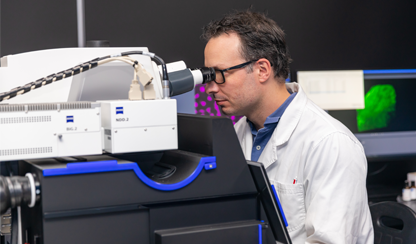In September last year, we wrote to you about the important role of new technology to make the fight against heart disease and diabetes, smarter, faster and easier. Thank you for your generous gifts to support state-of-the art equipment and technology at the Institute. We asked Dr Adam Parslow, microscopy facility manager, about his insights into optical microscopy.

What is the most interesting thing you have seen lately using the multiphoton microscopy platform?
We can see in real time how clots form within blood vessels under our super-resolution microscope. We then treat these clots with various novel drugs that are being developed at the Baker Institute to discover potentially beneficial new treatments for patients. We are excited about the possibilities this research enables.
How has donor support made an impact on research at the Institute?
It enables us to continue to use incredible, world-first technology to perform leading-edge experiments. This gives us more insight on how to find better treatments for heart disease and diabetes. Having this unique microscope allows us to mentor the next generation of scientists and empower them to advance their research in ways that will make a difference to real lives.
Here are some examples of images taken from our microscopes:




